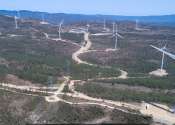Life cycle analysis reveals mixed CO₂ benefits from green hydrogen
Green hydrogen often, but certainly not always, leads to CO2 gains. This claim is based on research published in Nature Energy by Kiane de Kleijne from Radboud University and Eindhoven University of Technology.
Jun 21, 2024
0
23









